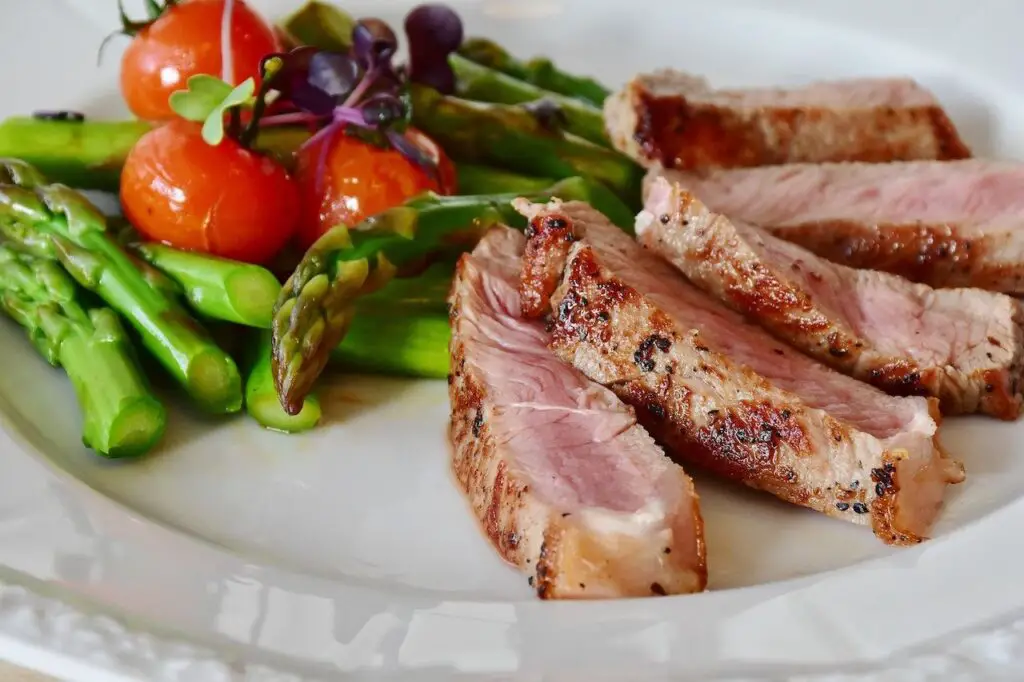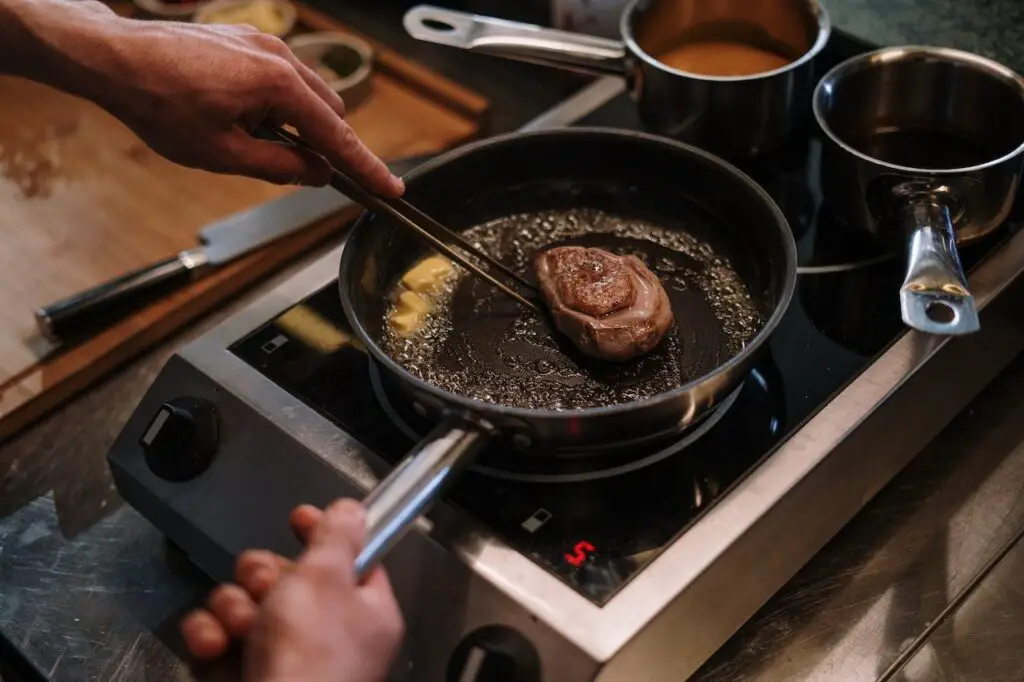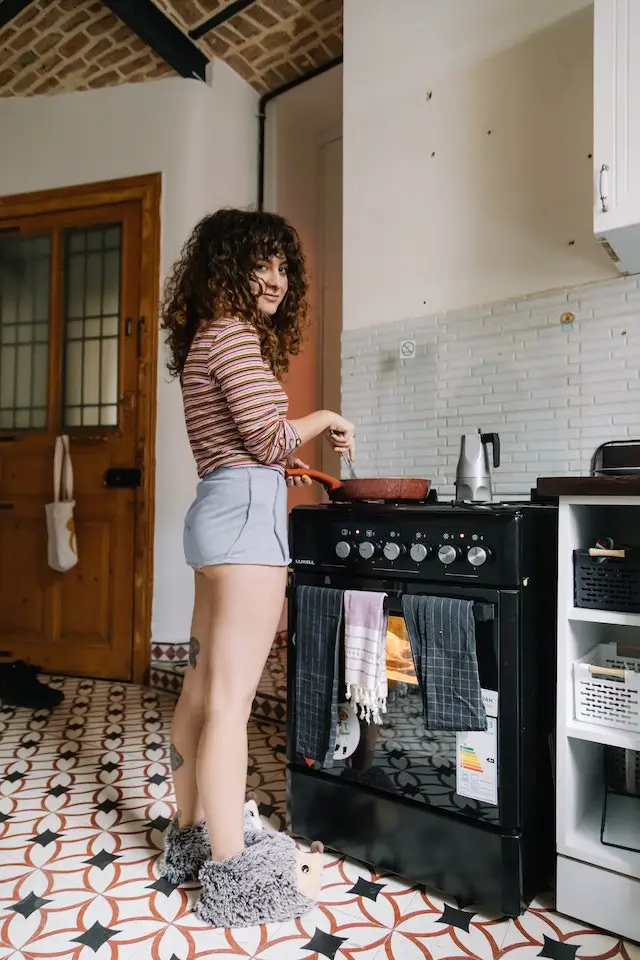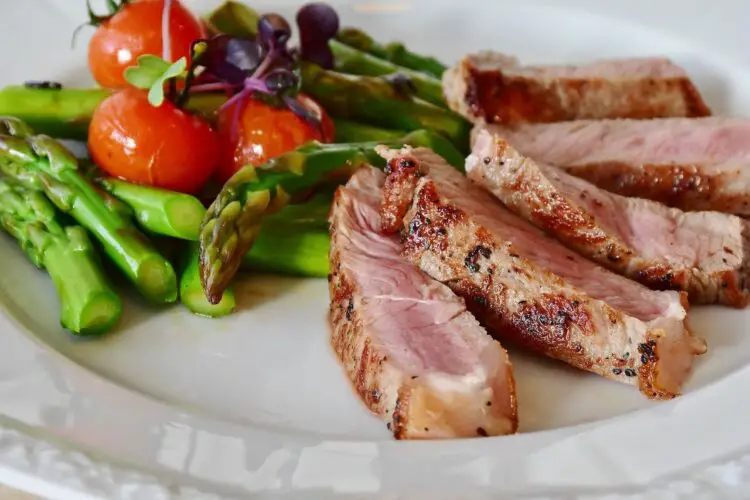
Reheating leftover steak can be tricky, but it’s an important skill to learn. When done right, reheated steak can taste just as juicy, tender and flavorful as a fresh steak. This article will teach you the best reheating methods to maintain the taste and texture of your leftover steak.
Properly reheating leftover steak starts with learning the right techniques. The goal is to bring the steak up to a safe eating temperature while keeping it as tender and juicy as possible. With the wrong reheating method, steak can end up dry, rubbery, and lacking in flavor. But when you use methods like the oven, stovetop or sous vide, you can make magic happen with leftovers. Read on to learn how!
Considerations Before Reheating
Before you reheat your steak, keep these tips in mind:
- Let the steak rest at room temperature for 10-30 minutes before reheating. This helps it cook more evenly since refrigerated steak will heat up slower on the inside. Sitting out helps the inside come closer to the outside temperature.
- Add a little leftover meat juice, broth or water to keep the steak moist. Spooning some juices over the steak or into the reheating pan provides added moisture and helps prevent the steak from drying out.
- Cut the steak into smaller pieces so it reheats faster and more evenly. A whole steak takes longer to reheat, which can lead to overcooking the thinner outer parts. Cutting into strips or slices means reheating happens more quickly.
Reheating Steak is Like Recooking

Before we dive into the specific step-by-step techniques for properly reheating steak, it is important to understand why reheating steak can often be so challenging and rarely delivers optimal results. When reheated improperly using the wrong methods, steak has the unfortunate tendency to emerge from the reheating process tough, chewy, and completely lacking in the flavor and succulent tenderness that a fresh cut of top-quality steak is prized for. This unappetizing dried out, flavorless, rubbery texture is a result of the reheating process overcooking the delicate proteins within the meat leading to a loss of moisture and a breakdown of the tender mouthfeel. The ultimate goal and skill of properly reheating steak is to expertly walk the fine line of bringing the steak up to a safe and palatable temperature without pushing it over the edge into undesirable dryness and hacky overcooked meat territory. When done with care and mindfulness, it is possible to reheated steak in a way that retains that desirable tender and juicy texture, while also preserving and even enhancing the wonderful savory flavors that make steak such a crave-worthy indulgence in the first place. By learning and utilizing specialized techniques like oven warming followed by stovetop searing or gentle sous vide reheating, you can master the art of reheating steak in a manner that leaves it just as moist, flavorful, and deliciously enjoyable to eat as a freshly cooked piece of top-shelf steak coming right off the grill or out of the pan for the first time.
- You need to bring the steak up to a safe eating temperature, at least 145°F. Use a meat thermometer to check the internal temperature when reheating. This ensures any bacteria that may have grown are killed off.
- How done you like your steak (rare, medium-rare) applies to reheated steak too. Target the same internal temp when reheating as you would when cooking a fresh steak.
- For medium-rare, aim for an internal temperature of 145°F. For medium 160°F, and for well-done 170°F.
- Reheated steak should reach the same internal temperature as a fresh cooked steak to be safe to eat and to achieve the proper level of doneness.
Use a Meat Thermometer
Using a reliable meat thermometer is a critical step when reheating steak to ensure safety and achieve the perfect doneness. Unlike when cooking steak the first time, you can’t rely as much on checking for visual cues when reheating. A good thermometer eliminates any guessing and provides peace of mind that your reheated steak is properly cooked. Investing in a high-quality instant-read or leave-in thermometer is a small price to pay for perfectly cooked steak every time. When inserted into the thickest part of the steak, an accurate thermometer reading ensures that all bacteria are killed and the interior reaches your desired level of doneness, whether rare or medium-well. Don’t sacrifice taste or safety – let a meat thermometer be your guide for reheated steak success.
- Use an instant-read or leave-in thermometer to check the internal temp. Insert the thermometer probe into the thickest part of the steak to get an accurate reading.
- For medium-rare reheated steak, target an internal temperature of 145°F on the thermometer.
- Double check in a few spots to ensure the entire piece of steak has reached the proper reheating temperature for food safety.
- This ensures the steak is heated all the way through to a safe temperature to prevent foodborne illness. Trust the thermometer, not just eyeballing it!
Oven to Stovetop Method
If your priority is maximum juiciness, tenderness, and flavor, oven reheating is the best technique. The gentle, even dry heat surrounds the steak to warm it through without creating a rubbery texture. Be prepared to wait 20-30 minutes for the oven to thoroughly reheat the steak, but the time investment pays off in the superior moistness and retained flavor. This reheating method gives you a juicy interior and crispy seared exterior:
- Preheat oven to 250°F. This low temperature gently heats the steak without overcooking the exterior before it’s seared.
- Place steak on a baking sheet with a rack. The rack elevates the steak to promote even heating.
- Heat in oven for 20-30 minutes until internal temp reaches 110°F. Check often to avoid overcooking.
- In a skillet, heat 1 tbsp high smoke point oil over medium-high heat until very hot.
- Sear steak 1-2 minutes per side to develop a flavorful, caramelized crust. Use tongs to flip carefully.
- Let steak rest 5 minutes before slicing to allow juices to redistribute. This makes for a juicier reheated steak.
- Season the rested steak with salt and pepper or other spices to finish. You can also top with a steak sauce or compound butter.
Stovetop Methods

For a quicker reheating method, the stovetop allows you to revive your leftover steak in just 5-10 minutes. Direct contact with the hot pan also imparts an appetizing seared crust on the exterior of the steak. However, cooking too hot or too long on the stovetop risks drying out the steak and requires close monitoring. The stovetop is great for quicker reheating:
- Use a grill pan or cast iron skillet over medium heat. The thick pan conducts heat evenly to the steak as it reheats.
- Add a little broth, juice or oil to the pan to prevent sticking. This adds moisture and allows the steak to reheat without sticking.
- Cook for 2-3 minutes per side until heated through. Flip once halfway through reheating.
- The stovetop method can impart a nice sear flavor from the pan as the steak reheats.
- Let the reheated steak rest for 5 minutes before slicing and serving.
- Pair your reheated stovetop steak with sautéed veggies or a loaded baked potato for a complete meal.
Sous Vide Reheating
Utilizing the precise temperature control of sous vide, you can gently reheat steak in a water bath set between 120-130°F for 10-15 minutes. This slow, even heating retains moisture exceptionally well. The trade-off is needing the specialized sous vide equipment. Use a sous vide cooker for hands-off, gentle reheating:
- Seal seasoned steak in a plastic sous vide bag, removing any air. This creates the vacuum environment needed.
- Set the sous vide circulator to 120-130°F and cook for 5-10 minutes until the steak is heated through.
- The sous vide provides very gentle, even heating to bring the steak up to temperature without overcooking.
- Sous vide reheating retains moisture extremely well for a tender, juicy result.
- For added crispness after sous vide reheating, do a quick pan sear.
Getting the Perfect Sear
For the best crust on reheated steak:
- Pat steak dry with paper towels before searing. Excess moisture can cause steaming instead of browning.
- Use a very hot cast iron skillet or stainless steel pan with 1 tbsp high smoke point oil like grapeseed or avocado oil.
- Place steak in hot pan and sear approximately 1 minute per side. Press down gently with spatula to maximize contact.
- The quick hot sear gives fantastic caramelization and flavor without overcooking the interior.
- Let steak rest 5 minutes after searing to allow juices to settle for a juicy slice.
- Slice reheated steak across the grain for tenderest results. Enjoy your restaurant-worthy steak!
Can Freezing Lemongrass Improve the Flavor and Tenderness of Steak When Reheating?
Freezing lemongrass tips: Freezing lemongrass can enhance the flavor of steak when reheating. Adding frozen lemongrass to the steak before reheating can infuse it with a fresh, aromatic taste. The natural oils in lemongrass can also help to tenderize the meat, resulting in a more succulent texture.
Microwave Reheating
When time is of the essence, the microwave can reheat steak in a mere 2-5 minutes. But this rapid intense heat often squeezes out moisture and overcooks the meat, leaving an undesirably rubbery, dry steak. Use the microwave cautiously and in short intervals to minimize this effect. To microwave steak effectively, follow these tips:
- Place the steak on a microwave-safe plate.
- Cover it with a slightly damp paper towel to capture moisture.
- Set the microwave to medium heat.
- Reheat the steak in 30-second intervals, flipping it in between to ensure even heating.
- Depending on the thickness of the steak and the microwave’s power, this process typically takes 90 seconds to 2 minutes.
While microwaving won’t recreate the same level of crispness as before, this method can still yield a juicy and flavorful result. However, be cautious with adding a pat of butter, as it may make the reheated steak greasier than desired.
More Reheating Tips
- Add leftover meat juices or gravy to the steak when reheating for extra moisture. Spoon juices over the top or place steak in a sauce bath.
- After reheating, slice steak against the grain for maximum tenderness. This goes for both whole steaks and steak slices.
- Take care not to overcook the steak or it can quickly go from juicy to rubbery in texture. Use lower heat, frequent checks, and thermometer.
- Don’t microwave reheated steak. The intense heat makes it impossible to avoid overcooking.
- Let steak rest at least 5 minutes after reheating so juices can redistribute before slicing.
Can the Methods for Reheating Steak Also Apply to Reheating Chicken Wings?
When it comes to the fancy chicken wings debate, the methods for reheating steak like oven, frying, or grilling can also apply. However, it’s crucial to adjust the time and temperature to ensure the chicken wings are reheated thoroughly without drying out or becoming rubbery.
Comparing Reheating Methods
When reheating leftover steak, the method you choose can make all the difference between a juicy, flavorful success versus a dried-out, chewy failure. Certain techniques are better suited for optimizing specific characteristics in your reheated steak. Oven reheating delivers the most evenly cooked, tender and flavorful results, but requires more time. Stovetop methods work faster, while adding a nice sear, but can dry out the steak if you’re not careful. Microwaves provide the ultimate in speed, but often at the expense of overcooking the steak. And sous vide utilizes precise temperature control for very gentle, moisture-retaining reheating. Consider the results you want as well as the time you have as you choose among these various reheating methods laid out below.
| Method | Best For | Time |
|---|---|---|
| Oven | Most flavorful, juicy | 20-30 minutes |
| Stovetop | Quick, adds sear | 5-10 minutes |
| Microwave | Fastest but can overcook | 2-5 minutes |
| Sous vide | Very gentle, retains moisture | 10-15 minutes |
Conclusion/Summary
In closing, with the proper reheating techniques, leftover steak can once again become a mouthwatering indulgence. The oven-to-stovetop method in particular yields the best reheated results by gently warming the steak in the oven to retain interior juiciness, then searing it on the stovetop to add a crispy, flavorful crust. Allowing your steak to rest at room temperature before reheating also enables more even cooking throughout. Always rely on an accurate meat thermometer to validate that safe temperatures are attained. With careful monitoring to avoid overcooking, and the application of methods like oven-stovetop, your reheated steak can be just as tender, juicy and delicious as it was originally.
While reheating steak presents some challenges, this guide equips you with the key insights and techniques to transform your leftovers into a stunning second act. Bring those sad rubbery remnants back to their former glory. With the proper tools, methods and care, your reheated steak can once again deliver everything you crave – fork-tender texture, mouthwatering juices, and intensely satisfying flavor. No more disappointment or waste – breathe new life into your leftover steak and enjoy every morsel as if straight from the grill. You now have the reheating knowledge to make your second steak experience even more satisfying than the first!

